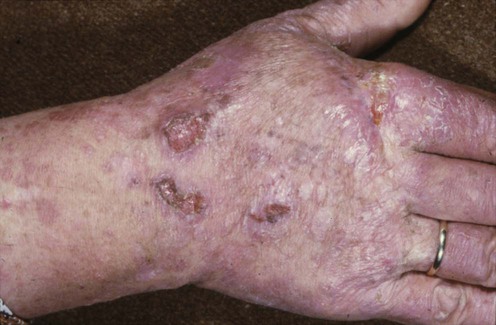The high risk of malignant transformation in genetic EV seems to be reduced in the acquired variety. In addition to HIV, other causes of immunosuppression may give rise to a similar clinical picture.
Epidermodysplasia verruciformis

Specific investigations
Epidermodysplasia verruciformis in the setting of graft-versus-host disease.
![]()
Stay updated, free articles. Join our Telegram channel

Full access? Get Clinical Tree






